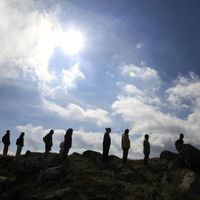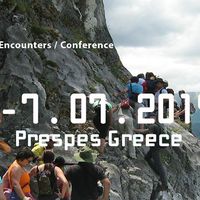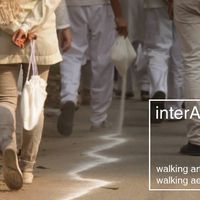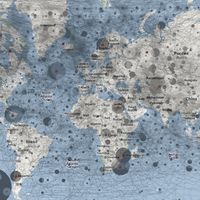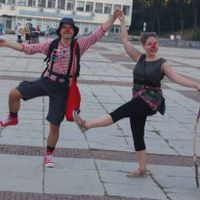Walking Art / Walking Aesthetics

The special issue of Interartive on Walking Art / Walking Aesthetics aims at the presentation of papers and art projects that examine or use walking as a contemporary art practice. Since the Situationists, walking has become a widespread contemporary art practice that has at least two aspects: the one is that of a way of experiencing the environment and the body and possibly create artworks from the attained experiences (art of walking). The other aspect is walking art as an independent art medium; a way to initiate works that are autonomously defined and create artworks (walking art).
The papers and projects that have been submitted to this special issue reflect on issues that cover various aspects of both the art of walking and the walking art issues. Walking has gained a contemporary importance as a medium that incorporates the body, the landscape and a number of disciplines related to them. Walking either as a medium or a form of artistic praxis is an approach that will keep developing, assimilating and expressing a broad spectrum of the human experience.
One of the questions that have been addressed is whether walking is a practice independent from the space, where it is developed. In short, if the place defines (and provokes) the walking process or the need to walk is initiated from the expansion of the artist’s body in space and eventually the exploration of both the body and the environment.
In most of the walking practices that are presented, there is no any special preparation of the artist’s body before going outdoors. The practitioner of walking (whether an artist or a theoretician) explores the place of his interest having in mind a task, but without preparing his/or her body specifically for that.
Walking practice is used as a medium of political activism; a need to understand the psychogeography of a specific place under the perspective of a political view or its cultural heritage.
The question aroused of whether to use any electronic devices (photography, video, iPods, etc.) to record the itinerary, or is it indeed enough to write the experiences in a diary or other form of text.
There is the question of whether the process related to walking becomes an aesthetisized outcome when it is presented, even in an unedited form, or should it stay only as a narrative memory.
Read Walking Art / Walking Aesthetics
Image: Reflecting at the borderline (photo Yannis Ziogas and Christos Ioannidis)
Similar content
deadline
31 May 2018
deadline
10 Mar 2019
deadline
10 May 2020
posted on
18 Oct 2013
deadline
01 Oct 2020

